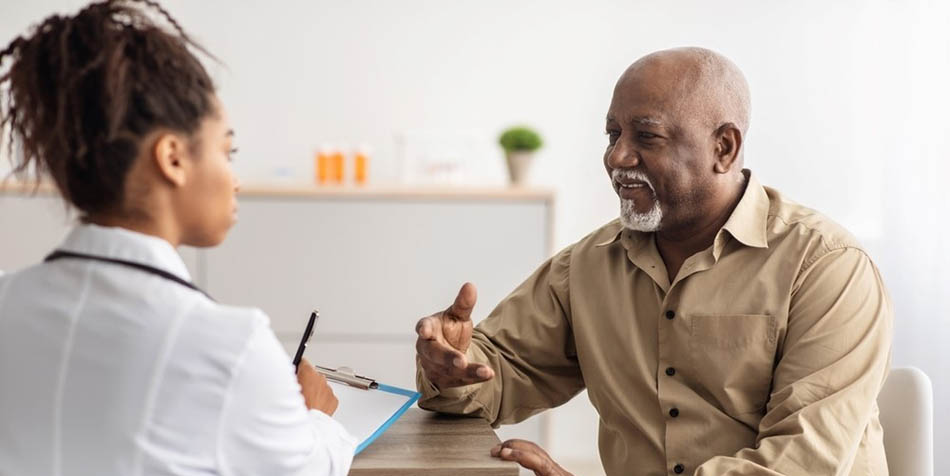
Acting quickly in response to a stroke is important to reduce the chances of brain damage and other complications.
Stroke is a leading cause of death in the United States and a leading cause of long-term disability. While the risk of stroke increases with age, one can occur at any age. Globally, 1 in 4 adults over age 25 will have a stroke in their lifetime, and approximately 14.5 million people worldwide will have a stroke this year. That's why it is critical to recognize the warning signs of a stroke and seek help as quickly as possible.
What is a stroke?
A stroke occurs when blood flow to the brain is blocked, which prevents it from getting oxygen and nutrients, according to the National Heart, Lung, and Blood Institute. When the brain is deprived of oxygen and nutrients, the cells begin to die. This can cause brain damage leading to disability or even death.
The most common type of stroke is ischemic stroke, in which plaque or a blood clot blocks blood flow to an artery or the brain. Approximately 87% of strokes are ischemic strokes. A hemorrhagic stroke occurs when a blood vessel bursts and leaks blood into the brain. These are less common and makeup only about 13% of strokes.
Prior to a stroke, some people may experience a "mini stroke" or transient ischemic attack (TIA).
"TIAs have stroke symptoms that resolve within a very short period of time, typically within 20 to 60 minutes, but by definition within 24 hours," says Dr. Alex Schneider, a neurologist at HCA Healthcare's Mission Hospital in Asheville, North Carolina. "And what it can indicate is that a more serious stroke may occur in the short term."
Dr. Schneider notes that, in general, the risk of having a stroke after a TIA is 10% to 15% by three months, and about half of these strokes will occur within the first week. "If someone has a TIA, it really is an indicator that they need to seek medical attention, even if their symptoms have resolved."
Warning signs of stroke
Typically, there are no advance warning signs of a stroke, Dr. Schneider says. "The symptoms we equate with the warning signs of a stroke are often sudden when they occur, and it depends on which part of the brain is affected."
According to the Centers for Disease Control and Prevention (CDC), signs of a stroke include:
- Sudden numbness or weakness in the face, arm or leg, usually on one side of the body
- Sudden confusion, difficulty speaking or difficulty understanding speech (aphasia)
- Sudden vision changes or loss of vision in one or both eyes
- Sudden trouble walking, loss of balance, lack of coordination or dizziness
- Sudden severe headache with no known cause
Men and women are similarly affected by stroke, and everyone should be aware that it is a neurologic emergency in which 911 should be called immediately, Dr. Schneider says.
How to recognize if someone is having a stroke
Experts previously recommended the acronym FAST (face, arms, speech, time) as a way to recognize if someone was having a stroke. This includes looking for facial drooping, weakness or numbness in one arm, and slurred speech — and calling 911 right away if symptoms appear. In recent years, the recommendation has shifted to BE FAST (balance, eyes, face, arms, speech and time) to include loss of balance and coordination and loss of vision in one or both eyes.
"FAST screens for the possibility that someone might be having a stroke, but it doesn't capture or categorize all of the possible symptoms," Dr. Schneider says. "BE FAST now adds in difficulties or changes in vision, balance or coordination of movement. This adds those other elements that we know are symptoms of a stroke. Someone may be having just visual symptoms or balance symptoms that have occurred suddenly, but they may not be having the speech difficulty or weakness on one side of the body or face that FAST would capture."
If someone is having a stroke, quick access to appropriate care can improve their chance of recovery and reduce the odds of disability, Dr. Schneider says. Stroke treatments are time-based and need to be given within the first few hours.
"Rather than waiting to see if the symptoms go away, we really encourage calling 911," Dr. Schneider says. "It's the best way to get to the hospital emergently and to activate the systems of care that are in place in many areas across the country for recognizing and treating stroke."
Can stroke risk be reduced?
Stroke can affect anyone, says Dr. Schneider, but factors like smoking or physical inactivity can increase someone's risk.
"We do recommend at least 30 minutes of activity at least five days a week," Dr. Schneider says. "Also watching what we eat and choosing a plant-based diet with smaller amounts of meat and fish is recommended, or what is referred to as a Mediterranean diet — and avoiding processed foods."
One of the best things you can do to lower your risk of stroke is to manage your blood pressure, Dr. Schneider says. While nearly half of adults have high blood pressure (hypertension), only about 1 in 4 have their condition under control.
"Hypertension is what we refer to as a silent killer because people can have high blood pressure and not even know it," Dr. Schneider says. Routine checkups are essential for treating high blood pressure and, in turn, lowering stroke risk. Most people with high blood pressure are recommended prescription medication and lifestyle modifications.
"If we treated all blood pressure effectively across the world, we could potentially reduce stroke by approximately 50%," says Dr. Schneider.
While many strokes can be prevented with lifestyle changes, it is equally important to recognize the warning signs in case a stroke does occur. Acting quickly can help save a life and reduce the risk of brain damage and other complications.
$webqFacilityNumber
Need a Physician?